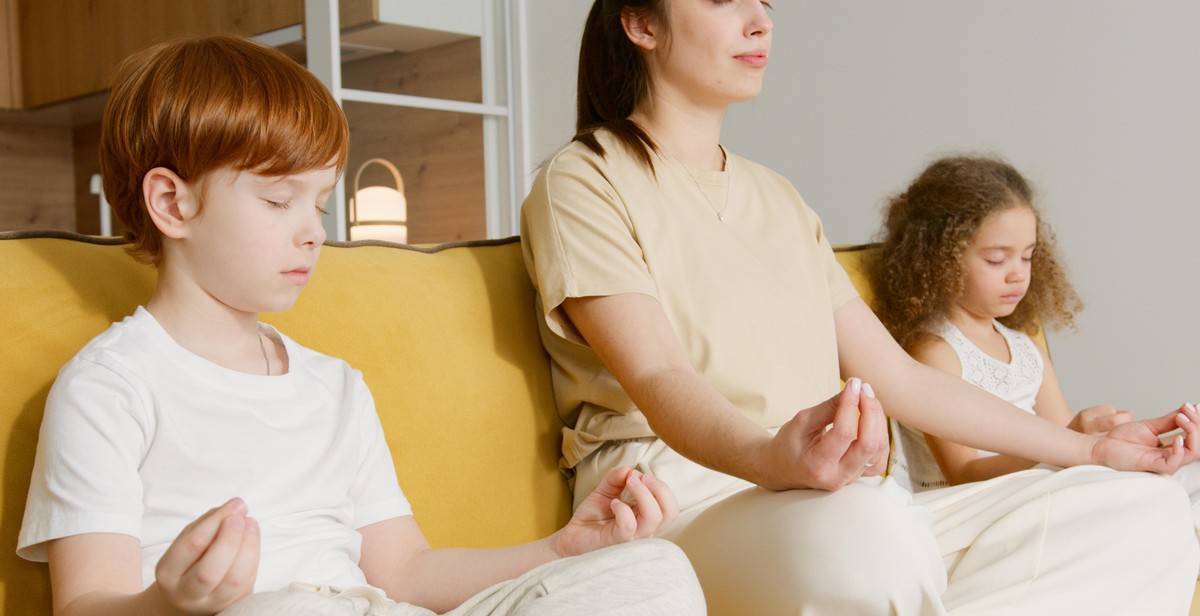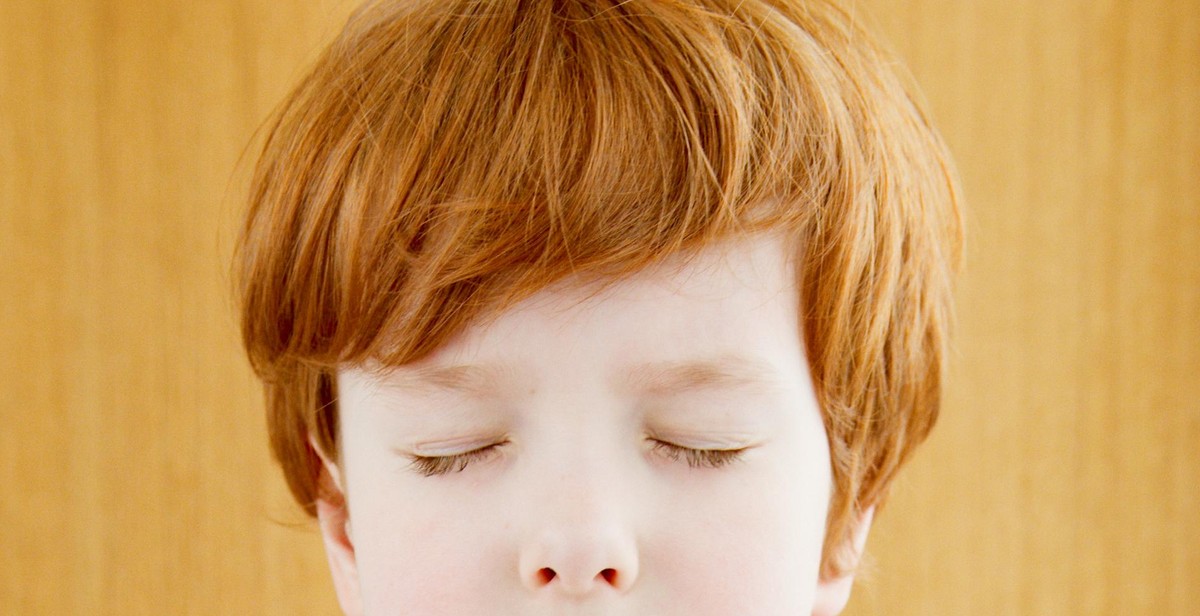The Benefits of Meditation for Improving Emotional Regulation in Children
Meditation is a practice that has been around for thousands of years and has been gaining popularity in recent times for its numerous benefits. It involves training the mind to focus and achieve a state of calmness, relaxation, and inner peace. Meditation has been shown to have positive effects on emotional regulation, reducing stress and anxiety, and increasing overall well-being.
What is Meditation?
Meditation is a mental exercise that involves training the mind to focus and achieve a state of calmness, relaxation, and inner peace. It is often practiced by sitting in a comfortable position and focusing on the breath, a mantra, or a specific object. The goal is to quiet the mind and achieve a state of mindfulness, where one is fully present in the moment and aware of their thoughts and emotions without judgment.
The Benefits of Meditation for Children
Research has shown that meditation can have numerous benefits for children, including improving emotional regulation, reducing stress and anxiety, and increasing overall well-being. By practicing meditation, children can learn to manage their emotions better and develop a greater sense of self-awareness, empathy, and compassion.
- Improves emotional regulation
- Reduces stress and anxiety
- Increases overall well-being
- Develops greater sense of self-awareness, empathy, and compassion
The benefits of meditation for children are numerous, and the practice can be incorporated into their daily routine with ease. By teaching children to meditate, we can help them develop lifelong skills that will enable them to manage their emotions and live happier, healthier lives.

The Science Behind Emotional Regulation
Emotional regulation is the ability to recognize, understand, and manage emotions in a healthy way. It is a critical life skill that can help children develop resilience, cope with stress, and form positive relationships. The science behind emotional regulation is complex, but research has shown that it is closely linked to brain development and the nervous system.
Brain Development
The brain is the control center for emotions, thoughts, and behaviors. Emotional regulation involves the prefrontal cortex, which is responsible for executive functions such as decision-making, problem-solving, and impulse control. The prefrontal cortex is not fully developed in children, and it continues to mature well into adulthood. This means that children may struggle with emotional regulation due to limited prefrontal cortex function.
Nervous System
The nervous system plays a crucial role in emotional regulation. The sympathetic nervous system is responsible for the fight or flight response, which is activated in response to stress or danger. The parasympathetic nervous system is responsible for the rest and digest response, which promotes relaxation and calmness. When children experience stress or strong emotions, their sympathetic nervous system is activated, and they may feel anxious, angry, or overwhelmed. By practicing emotional regulation techniques such as meditation, children can activate their parasympathetic nervous system, leading to a sense of calm and relaxation.
The Benefits of Emotional Regulation
Emotional regulation has numerous benefits for children. It can help them:
- Develop resilience
- Cope with stress and anxiety
- Improve social skills and relationships
- Enhance academic performance
- Improve overall well-being and mental health
Research has also shown that emotional regulation is a key predictor of success in adulthood, highlighting the importance of developing this skill early in life.
| Emotional Regulation Techniques | Description |
|---|---|
| Mindfulness Meditation | A practice that involves focusing on the present moment and accepting thoughts and feelings without judgment. |
| Deep Breathing | A technique that involves taking slow, deep breaths to activate the parasympathetic nervous system and promote relaxation. |
| Progressive Muscle Relaxation | A technique that involves tensing and relaxing different muscle groups to release tension and promote relaxation. |
| Positive Self-Talk | A technique that involves using positive affirmations and self-talk to reframe negative thoughts and emotions. |
Overall, emotional regulation is a critical life skill that can help children thrive academically, socially, and emotionally. By understanding the science behind emotional regulation and practicing techniques such as meditation, children can develop this skill and experience the many benefits it offers.

Meditation Techniques for Children
Meditation is a great way to help children improve their emotional regulation and manage stress. Here are two effective meditation techniques for children:
Breathing Techniques
Breathing techniques are a simple and effective way to help children calm down and focus. Here’s how to teach children a simple breathing technique:
- Have the child sit comfortably with their back straight and their eyes closed.
- Ask them to take a deep breath in through their nose, counting to four as they inhale.
- Then, ask them to hold their breath for a count of four.
- Finally, ask them to exhale slowly through their mouth, counting to four as they do so.
- Repeat this process for a few minutes, encouraging the child to focus on their breath and let go of any distracting thoughts.
Visualization Techniques
Visualization techniques involve guiding children through a mental image or scenario, helping them to feel calm and relaxed. Here’s how to teach children a simple visualization technique:
- Have the child sit comfortably with their back straight and their eyes closed.
- Ask them to imagine a peaceful place, such as a beach or a forest.
- Encourage them to use their senses to make the visualization more vivid, such as feeling the warmth of the sun or the coolness of the breeze.
- Guide them through the visualization, describing the scene in detail and encouraging them to stay focused on the mental image.
- Repeat this process for a few minutes, allowing the child to fully immerse themselves in the visualization.
Both breathing and visualization techniques can be practiced regularly to help children build emotional resilience and improve their ability to regulate their emotions.

Benefits of Meditation for Children
Meditation is a practice that has been around for thousands of years and has been proven to have numerous benefits for people of all ages, including children. Here are some of the key benefits of meditation for children:
Reduced Stress and Anxiety
Children today face a lot of pressure from various sources, including school, social media, and family expectations. This can lead to stress and anxiety, which can affect their mental and physical health. Meditation has been shown to be an effective way to reduce stress and anxiety in children. By teaching children to focus on their breath and be present in the moment, meditation can help them feel calmer and more relaxed.
Improved Focus and Concentration
With so many distractions around us, it can be hard for children to focus on their studies or other activities. Meditation can help improve their ability to focus and concentrate by training their minds to stay present and focused on the task at hand. This can lead to better academic performance and a greater sense of accomplishment.
Increased Self-Awareness and Self-Esteem
Self-awareness and self-esteem are important for children’s emotional and mental well-being. Meditation can help children become more aware of their thoughts and feelings, which can lead to a better understanding of themselves. This, in turn, can boost their self-esteem and confidence. By learning to be present and non-judgmental, children can develop a more positive self-image and a greater sense of self-worth.
Overall, meditation is a valuable tool for improving emotional regulation in children. By reducing stress and anxiety, improving focus and concentration, and increasing self-awareness and self-esteem, meditation can help children develop a strong foundation for their mental and emotional health.

Implementing Meditation in a Child’s Routine
Introducing meditation to a child’s routine can be a challenging task, but it is not impossible. Starting small and incorporating meditation into daily activities is a great way to begin.
Starting Small
It is important to start with short meditation sessions, especially when introducing meditation to a child. Children have shorter attention spans, and it may be difficult for them to sit still for long periods. Start with a few minutes of meditation and gradually increase the duration as the child becomes more comfortable and familiar with the practice.
It is also essential to create a comfortable and peaceful environment for the child. Choose a quiet and secluded area in the home where the child can relax and focus without distractions. This can be a designated meditation space or a corner in the child’s bedroom.
Incorporating Meditation into Daily Activities
One of the easiest ways to incorporate meditation into a child’s routine is to tie it to an existing daily activity. For example, parents can encourage the child to take a few deep breaths before each meal or before going to bed. This can help the child relax and calm down, making it easier to fall asleep.
Another way to incorporate meditation into daily activities is to use guided meditation apps or videos. There are many child-friendly meditation apps and videos available that can make the practice more engaging and enjoyable for the child.
Parents can also encourage the child to practice mindfulness throughout the day. This can involve focusing on the present moment, paying attention to the senses, and being aware of thoughts and emotions. Mindfulness can be practiced during simple activities such as walking, eating, or playing.
Overall, introducing meditation to a child’s routine requires patience and consistency. By starting small and incorporating meditation into daily activities, parents can help their child reap the many benefits of this practice.

Conclusion
Overall, meditation is a powerful tool that can help children improve their emotional regulation skills. By teaching children to focus their attention, regulate their breathing, and develop mindfulness, meditation can help children become more aware of their emotions and learn how to manage them effectively.
The Benefits of Meditation for Children
- Reduces stress and anxiety
- Improves attention and focus
- Boosts emotional regulation
- Fosters a sense of calm and relaxation
- Enhances overall well-being and happiness
How to Introduce Meditation to Children
Introducing meditation to children can be a fun and engaging process. Here are some tips:
- Start with short sessions
- Use guided meditations to help children focus their attention
- Incorporate movement and play into meditation activities
- Encourage children to practice regularly
Final Thoughts
Meditation can be a powerful tool for improving emotional regulation in children. By helping children develop mindfulness, focus, and relaxation skills, meditation can equip them with the tools they need to manage their emotions effectively and lead happier, healthier lives.
